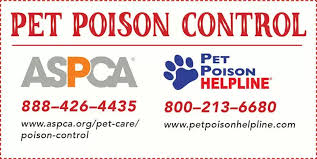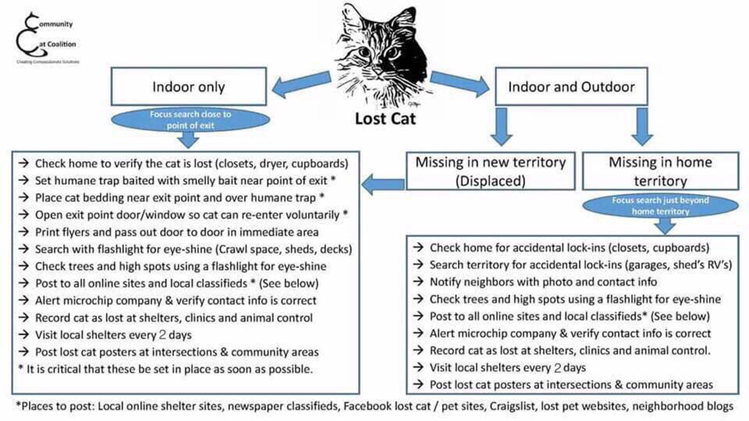Helpful Info
Pet Dangers
- 7 Worst Cat Foods for 2024 – How to Choose a Quality Food (According to FelineLiving.Net)
https://www.felineliving.net/worst-cat-foods/
- If you use SERESTO Collars for your pets, you need to STOP and read this article!
Seresto works by releasing small amounts of TWO pesticides on your pet. Through January 2023, the EPA has received more than 75,000 incident reports related to the collars, including nearly 1,000 involving human harm (rashes and seizures) and at least 1,698 reports of PET DEATHS! Please find a safe alternative, non-collar prevention for your pets.
https://www.usatoday.com/story/news/investigations/2021/03/02/seresto-dog-cat-collars-found-harm-pets-humans-epa-records-show/4574753001/
-
Do you use essential oils in your home?
If so, please make sure that the ones you have are not toxic for your pets. The vet and the poison control are saying that they see these cases often now that the popularity of essential oil is growing. According to veterinarians here is a list of essential oils not to use if you have a cat or a dog at home. These are toxic whether they are applied to the skin OR used in diffusers and they can be different for dogs and cats.Anise (Pimpinella anisum)Birch (Betula)Bitter Almond (Prunus dulcis)Boldo (Peumus boldus)Calamus (Acorus calamus)Camphor (Cinnamomum camphora)Cassia (Cassia fistula)Chenopodium (Chenopodium album)Cloves (Syzygium aromaticum)Garlic (Allium sativum)Goosefoot (Chenopodium murale)Horseradish (Armoracia rusticana)Hyssop (Hyssopus sp. with the exception of Decumbens)Juniper (Juniperus sp. with the exception of Juniper Berry)Mugwort (Artemisia vulgaris)Mustard (Brassica juncea)Oregano (Origanum vulgare)Pennyroyal (Mentha pulegium)Red or White ThymeRue (Ruta graveolens)Santolina (Santolina chamaecyparissus)Sassafras (Sassafras albidum)Savory (Satureja)Tansy (Tanacetum vulgare)Tea Tree Oil (Melaleuca alternifolia)Terebinth (Pistacia palaestina)Thuja (Thuja occidentalis)Wintergreen (Gaultheria procumbens)Wormwood (Artemisia absinthium)Yarrow (Achillea millefolium)
- EASTER LILIES and the Lilly Family are EXTREMELY TOXIC TO CATS!
https://www.petpoisonhelpline.com/pet-safety-tips/are-lilies-poisonous-to-cats/
- TULIPS ARE POISONOUS TO CATS!
If your cat happens to take a nibble on a tulip, it may experience symptoms such as vomiting, diarrhea, and drooling. In severe cases, tulip poisoning can even lead to organ damage or death.
https://www.backyardgardenlover.com/are-tulips-poisonous-to-cats/
-
Products in the “SOL” FAMILY are TOXIC TO CATS!
What is in Lysol that is toxic to cats?
Phenol is especially toxic to cats as their unique physiology makes their livers ill-equipped to clear it from their system. In addition to cleaners like Lysol, many essential oils such as thyme and tea-tree oils contain dangerous amounts of this chemical compound.
https://pets.thenest.com/phenol-cats-5429.html -
Pet Poison Prevention
Every year, hundreds of thousands of cats, dogs, and other animals in the United States experience accidental poisoning from many common foods, liquids, household supplies, plants, and other objects. The effects can range from mild discomfort to serious injury to death.
resource page from the U.S. Food and Drug Administration. https://www.fda.gov/animal-veterinary/animal-health-literacy/potentially-dangerous-items-your-petThe top 10 list of poisons:
- Over-the-counter medications, including vitamins, pain relievers, and supplements
- Human prescription medicines
- Food (most common issues were protein bars and shakes, xylitol, onions and garlic, and grapes and raisins)
- Chocolate
- Plants
- Household toxins, including cleaning products and toxins
- Veterinary products, including chews that your pet may find and overconsume
- Rodenticides
- Insecticides
- Gardening products, including fertilizers, which dogs love
Pet owners should also be aware of the potential risks posed by blue-green algae found in ponds, lakes, and other water sources. These blooms can become toxic.. Pet owners should keep pets away from water with visible cyanobacteria. If a pet consumes any cyanobacteria, owners should immediately wash the pet and monitor for symptoms over the next day or two. The CDC lists the following symptoms: loss of energy, loss of appetite, vomiting, stumbling and falling, foaming at the mouth, diarrhea, convulsions, excessive drooling, tremors, seizures, or any unexplained sickness.
- Don’t Mistake These 10 Poisonous Plants For Their Harmless Look-Alikes (housedigest.com
- 10 Popular Garden Plants Poisonous to Cats
https://protectapet.com/blogs/blog/10-popular-garden-plants-that-are-poisonous-to-cats?_pos=2&_psq=poison*&_ss=e&_v=1.0

- Debunking Internet Rumors: Is Swiffer® Wetjet® Safe for Pets?
There is no truth to the rumor, and this product can be safely used around pets.
https://www.aspca.org/news/debunking-internet-rumors-swiffer-wetjet-safe-pets
- Cat Proof Your Home: Keeping Felines Happy & Safe
https://iheartcats.com/cat-proof-your-home-keeping-felines-happy-safe/?iid=BottomRelatedPosts
- Declawing of cats is mutilation, unethical, unnecessary and inhumane.
Why most rescues, many veterinarians, and some cities and states are pushing for it to be banned.
https://pawproject.org/about-declawing/faqs/
- Pet Natural Disaster Checklist and Emergency Plan
Think ahead now and be prepared if disasters happen to strike your area. Never leave your pets at home. If it isn’t safe for you, it isn’t safe for your pets to be there either! Make a plan for them now and have all the needed items in a waterproof kit.
https://resources.bestfriends.org/article/pet-natural-disaster-checklist-and-emergency-plan? fbclid=IwAR1CepWmX8sCPmJK1OBePslGb_Z7arZKlSzucyVKWR4UkwA8Cr8pXHRTVKM
- YouTube Sued Over Animal Abuse Videos, Accused of Not Enforcing Ban
https://www.nytimes.com/2021/10/19/technology/youtube-sued-animal-abuse.html
- Google Wins Lawsuit Criticizing Animal Abuse YouTube Videos
https://www.channelnews.com.au/google-wins-lawsuit-criticizing-animal-abuse-youtube-videos/
- Summertime Pet Safety
https://www.petmd.com/search?keys=heat%20safety#search-results
Behavior
- Found A Pet in Chatham County, NC or the Surrounding Area?
https://www.chathamanimalrescue.org/found-pet/
- Lost Your Pet in Chatham County, NC or the Surrounding Area?
https://www.chathamanimalrescue.org/lost-pet/
- How To Find A Lost Cat (Click Here)
9 Best Cat Trackers (Click Here)
What To Do If Your Indoor Cat Gets Outside (Click Here)

- Benefits of Adopting Two Cats at the Same Time
Are you adopting soon? That’s great! But before you do, consider giving two cats their forever homes instead of one.
Check out the benefits of adopting two at the same time.
https://www.worldsbestcatlitter.com/2022/06/4-benefits-of-adopting-two-cats/
- Do Cats Get Lonely? Would Another Cat Help?
https://blindcatrescue.blogspot.com/2024/04/do-cats-get-lonely-would-another-cat.html
- Inside the Mind of a Cat: a Netflix Documentary Featuring the Cornell Feline Health Center.
This unique film examines the physiology, behavior, and history of our furry friends and their special bond with people, and is currently available for viewing on Netflix
Inside the Mind of a Cat
- Aggression in Cats
Is your cat biting and/or attacking you or other people? Here are different types of aggressions your cat could be experiencing and the ways to calm them.
https://www.jacksongalaxy.com/blog/aggression-in-cats/?utm_source=Klaviyo&utm_medium=flow&utm_klaviyo_id=01GTMJ51XHTBR3VEXJ2Y82JQWY&_kx=HjXI5kfPStksvtNz2Ho7
XADA3u91iQYYcaX8k8GbAUhd8zJgPmEIDRO2EzVS7bxW.PNyFR3
- Helpful Resources on Cat Behavior
http://pawsitivevibescats.com/media/
- How to Introduce a Dog to a Cat Household
https://iandloveandyou.com/blogs/pet-blog/introducing-dogs-to-cats?_ke=eyJrbF9lbWFpbCI6ICJhbmltYWxsb3ZlcnN1c2FuQGdtYWlsLmNvbSIsICJrbF9jb21wYW55X2lkIjogIm16S242OSJ9&
utm_campaign=Iheartcat%20Introducing%20Pets&utm_medium=email&utm_source=Iheartcat
- Failing Dogs by Nathan Winograd
When it comes to dog behavior, you can’t believe everything you hear or see.
https://nathanwinograd.substack.com/p/failing-dogs?utm_source=substack&utm_medium=email
- A ‘talking’ cat is giving scientists insight into how felines think
https://www.salon.com/2021/12/12/a-talking-cat-is-giving-scientists-insight-into-how-felines-think/
- The origin of domesticated cats, the reason ‘pspspsps’ causes mayhem, and how to pet your feline overlord
in precisely the right way (according to science).
https://getpocket.com/collections/why-your-cat-is-weird
- In today’s busy society, cats are much safer being indoor only. If you have a screened porch, cats can enjoy the best of both worlds by getting fresh air while still being safe from cars, other critters, fleas, ticks, and diseases or just chasing after something and getting lost. If you don’t have a screened porch, how about building a catio?
https://www.humanesociety.org/news/catios-great-outdoors
- Man Builds Elaborate Outdoor Play Land For His Rescue Cats:
https://blog.theanimalrescuesite.greatergood.com/man-builds-catio-for-rescue-
- How about installing some indoor shelving for your cats to climb on? What cat wouldn’t love this!
Health
- Nutrition Guide and Recommendations for Different Ages and Situations (According to FelineLiving.Net)
https://www.felineliving.net/nutrition-guide/
- Do you know what’s in their bowl?
Do misleading marketing terms and industry jargon make it feel like you need a Ph.D. in animal nutrition to understand what exactly you’re feeding your pet? If so, you’re not alone. The pet food industry is complex, especially when you consider that the nutritional requirements of animals are vastly different from human needs.
https://rawznaturalpetfood.com/resources/pet-food-label/?utm_source=ActiveCampaign&utm_medium=email&utm_content=Do+you+know+what+s+in+their+bowl%3F&utm_campaign
=RAWZ+AW+E-Blast+2+-+September+2022
- Constipation Can Be Challenging For our Cats
Managing the way to healthy bowel movements to help your cat.
https://www.catwatchnewsletter.com/health/constipation-can-be-challenging/?MailingID=126&sc=WU20210505&st=email&utm_source=ActiveCampaign&utm_medium=email&utm_content
=Constipation+Can+Be+Challenging&utm_campaign=WU20210505
- Telemedicine is helping to connect pet owners with providers and additional tools and care options for their pets after hours and during challenging times. OnlineDoctor.com a health services news website investigated the most popular online pet care and veterinary services platforms and identified the highest quality and most convenient options. You can view their selection here:
https://www.onlinedoctor.com/best-online-pet-care-veterinarian-services/
- Helping Kittens with ringworm: How to help kittens escape the fungal jungle
http://www.kittenlady.org/ringworm?fbclid=IwAR000MskQEJb0hXjm25F
- Introducing Pro Plan LiveClear Allergen Reducing Cat Food
Do you have allergies to cat dander? If so, there is a revolutionary new cat food shown to reduce the allergens in cat hair and dander by an average of 47% starting in the third week of daily feeding.
https://www.purina.com/pro-plan/cats/liveclear-cat-allergen-reducing-food
- We’re Feeding Cats Wrong? Ditch the Cat Food Bowls and Change the Schedules
https://www.catster.com/cat-food/were-feeding-cats-wrong-ditch-the-cat-food-bowl-and-change-the-schedule?%20%20utm_source=WhatCountsEmail&utm_medium=Catster%20Ful%20List&utm_campaign=ED20200517-Catser
- MU veterinary cardiologist recycles donated pacemakers — from both pets and people
— to maintain the rhythm of life for canine patients
https://vhc.missouri.edu/the-beat-goes-on/?fbclid=IwAR2sSiPYayI9hfIPUqBMOg20LuX3zbNf1VAoc31RLmBzNvDA0eo_Q86oRSM#:~:text=%E2%80%9CWe%20also
%20receive%20%E2%80%94%20and%20encourage,life%20for%20someone’s%20canine%20companion
Human Connection
-
Good Benefits of Owning a Pet for a Senior
https://www.parentgiving.com/elder-care/benefits-owning-pet-seniors-aging-in-place
-
Health Benefits And Risks Of Dog Ownership
There’s no doubt of the dedication of most dog owners to their beloved four-legged friends. But how do they help with our health?
https://apupabove.com/pages/health-benefit-dog-ownership
-
Guide to Renting an Apartment with an Emotional Support Animal
https://pettable.com/blog/renting-apartment-with-esa
- Traveling With Your Pet – Do’s, Don’ts, Precautions, and Safety
https://www.tripswithpets.com/twp-blog
- RVing with Pets: Tips, Campgrounds & Resources
https://boondockorbust.com/rv-camping-tips/rving-with-pets-tips-campgrounds-resources/
-
Messages Of Trust Video Series
https://trust-technique.com/product/messages-of-trust/
- NY Times: Death of a Cat
Death of a Cat Article By
https://www.nytimes.com/2020/08/03/opinion/feral-cat-dying.h tml?referringSource=articleSha re
- Coping With the Loss of a Pet
https://www.vetsecure.com/jordanlakeah.com/articles/302
Book –Going Home: Finding Peace When Pets Die by Jon Katz

Book –
- If Something Should Happen To You, Do You Have a Plan For Your Pet?
Your pets are part of your family and estate! Every animal deserves a lifetime of care, love, and security, and when you adopt an animal, you are promising a commitment to them for their lifetime. Without a proper plan in place for the future care of your pet, they are at risk of an uncertain future. What if you have more than one pet? Does your pet have specific needs? What about exotic animals or horses? It is extremely vital for you to plan ahead and don’t assume a family member will take them. Here is a great resource to help with questions and planning:
https://www.aspca.org/pet-care/pet-planning/frequently-asked-questions
Animal Welfare
- Advocating for pets in your local area
https://bestfriends.org/blogs/2020/11/17/advocating-pets-your-local-area?utm_medium=email&utm_source=mailchimp
- Tips & Tricks for People Helping Outdoor Cats
Anyone with a passion for helping outdoor cats is encouraged to log on and learn from trappers who have been in the field for more than 20 years. Beyond the basics of trap-neuter-return (TNR) this webinar will cover some tips only the pros can teach you – from using clear rear doors, to the benefits of Spam as bait, there’s sure to be something for everyone in this engaging presentation.
https://www.neighborhoodcats.org/?mc_cid=7f7b1b4695&mc_eid=d8184c128d
- The Community Cats Website
Offers podcasts, an informative blog, a grant and mentoring program, online conferences, and networking and sharing opportunities.
https://www.communitycatspodcast.com/
-
PET ‘COSMETIC SURGERY’ BANNED IN QUEBEC – February 20, 2024
https://ladyfreethinker.org/pet-cosmetic-surgery-banned-in-quebec/?utm_source=Newsletter&utm_medium=Email
- Current Stories in Animal Protection October 2024
The Los Angeles City Pound is a mismanaged, abusive house of horrors.
- Current Stories in Animal Protection 9/26/22
https://nathanwinograd.substack.com/p/this-week-in-animal-protection-721?utm_source=post-email-title&isFreemail=true&utm_medium=email
- Partnering with Animal Control to Save Lives
https://whowillletthedogsout.org/2023/01/22/partnering-with-animal-control-to-save-lives/
-
WHY ‘NO TETHER LAWS’ AND TAKING ANIMAL CRUELTY SERIOUSLY MATTER: A Q&A WITH POLICE OFFICER JIM CONROY
https://ladyfreethinker.org/why-no-tether-laws-and-taking-animal-cruelty-seriously-matter-a-qa-with-police-officer-jim-conroy/?utm_source=Newsletter&utm_medium=Email
- Who WILL Let The Dogs Out?
Shelters all over this country are struggling in unprecedented ways in the wake of the pandemic and the ongoing economic and housing crisis. We visit shelters and rescues in North Carolina, Georgia, Alabama, Mississippi, Tennessee, and Kentucky to shine a light on the huge number of animals and the amazing heroes fighting to save them. The problem doesn’t exist because people don’t care, but because they don’t know.
http://www.whowillletthedogsout.org/
- Yesterday, Today, and Tomorrow: Animal Sheltering in the United States
A Podcast Series
- Animal Laboratories and Experiments
What’s it like to be a dog being experimented on in a laboratory? A cat in the kill room of an animal “shelter”? A cow in a slaughterhouse? A mouse on a glue trap? A deer being hunted? A pig on a factory farm?
For Whom The Bell Tolls
- Citizens for Alternatives to Animal Research
https://www.caareusa.org/?utm_campaign=enews_scientific_articles_20&utm_medium=email&utm_source=caare
- Animal Rights Blogger Nathan Winograd and Important Victories and Info You Should Know
Nathan?s investigative journalism has uncovered corruption in some of the largest, best funded, and best known ?animal protection? organizations in the nation and has also earned him important legal victories for that work.
https://www.nathanwinograd.com/investigative-journalism/
https://www.nathanwinograd.com/author/nathan-j-winograd/
https://www.nathanwinograd.com/film/
- News Investigation into ASPCA Spending, Which Might Not Be What Donors Expect
https://www.cbsnews.com/news/aspca-spending-donor-cbs-news-investigation/
- An Advocate’s Guide to Stopping Puppy Mills
NC has some of the worst animal protection laws in the country.
https://www.humanesociety.org/sites/default/files/docs/HSUS_Advocate-Guide_Stopping-Puppy-Mills.pdf
-
In crisis: More than 10,000 dogs and cats were killed in NC
https://www.wral.com/in-crisis-more-than-10-000-dogs-and-cats-were-killed-in-nc-animal-shelters-last-year/18992379/
- NC among worst states for shelter pet killings at #2 in the nation, new study says. Updated March 22, 2023
https://www.whqr.org/local/2020-02-07/north-carolina-ranks-third-in-us-for-euthanized-shelter-pets
- No-kill 2025 halftime report by Julie Castle of Best Friends Animal Society
This drive to collect shelter-by-shelter data evolved into the first-of-its-kind shelter data visualization tool, the pet lifesaving dashboard, which provides anyone with access to it with information about what’s happening in their local animal shelters.
https://bestfriends.org/blogs/2020/12/11/no-kill-2025-halftime-report?utm_medium=email&utm_source=mailchimp
- NY should stop killing adoptable pets
https://www.cityandstateny.com/articles/opinion/opinion/ny-should-stop-killing-adoptable-pets.html
Animals displaying signs of stress just need proper support from their shelter.
By DANA FUCHS, December 8, 2020
- Stop killing so many cats and dogs: Why are so-called animal rights groups opposed to legislation that would save shelter pets?
https://www.nydailynews.com/opinion/ny-oped-stop-killing-cats-and-dogs-20191118- vbbbvhpfqvcfpmum7txrjzwqhu-story.html?fbclid=IwAR07hVAQCFxAlqleplD3Jlcv2cQqwex1L_w00gFaVNc_J_UZ02_Ho9ke8wA
- Is owning pets ethical? Here’s the truth about pet happiness (according to Vox).
https://www.vox.com/future-perfect/2023/4/11/23673393/pets-dogs-cats-animal-welfare-boredom?CHIRP-2023_04_17&sponsored=0&position=8&scheduled_corpus_item_id=98aa534f-fb55-4611-b7fc-4737d75436fe
Articles & Videos
-
Save a Dog With Your Pacemaker – Put It In Your Will
https://www.servicedogcertifications.org/dog-pacemaker/
- Activists Urge Coffee Sellers To Stop Charging More For Plant Milk.
https://ladyfreethinker.org/activists-urge-coffee-sellers-to-stop-charging-more-for-plant-milk/
- Breaking the Chain, from executive producer Anjelica Huston, tells the story of PETA’s dedicated fieldworkers who help neglected and abused dogs, cats, and other animals.
https://www.breakingthechainfilm.com/
-
STRAY is a powerful film for dog lovers….in fact the Variety Magazine review refers to it as “a love letter for dogs”. STRAY won coveted awards at Hot Docs and Tribeca and is garnering great reviews.
http://straymovie.com/
- EARTHLINGS is a 2005 American documentary film about humankind’s total dependence on animals for economic purposes. Presented in five chapters (pets, food, clothing, entertainment and scientific research) the film is narrated by Joaquin Phoenix, featuring music by Moby, and was written, produced and directed by Shaun Monson.
http://www.nationearth.com/
- ‘The Electrical Life Of Louis Wain’: New Biopic Starring Benedict Cumberbatch
Louis Wain is known for his humorous drawings of cats. He became hugely successful in the early 1900s, and is considered to have helped popularize the idea of cats as pets in Britain. The film tells Wain’s story from the moment he met his wife Emily, played by Claire Foy, to his later years when committed to a mental hospital, still drawing cats in an almost psychedelic style.
https://www.forbes.com/sites/sheenascott/2021/11/05/the-electrical-life-of-louis-wain-new-biopic-starring-benedict-cumberbatch-full-of-quirk/?sh=6ce4bb872858
- Deer Remembers a Famous Friend Years After He Helped Rescue Him
https://mymodernmet.com/travis-tritt-deer/?utm_source=convertkit&utm_medium=email&utm_campaign=weekly-broadcast&utm_term=deer-stories
-
How One Vegan Chef Got More Than a Million Followers plus other animal lover stories
https://unchainedtv.com/
- Facts about Wolves: the ancestral family of our beloved canines, addressing the various myths behind the incredible drive to slaughter them that still persists, especially in some States. The wolves really need our help.
https://environmental-action.org/
But what are wolves really like? It’s time to put the myths aside and get the facts on gray wolves.
Myth: Wolves live in packs defended by ferocious “alphas.” Myth: Wolves are dangerous to humans.
Fact: Wolves are wary of humans, and with their keen hearing and smell they are very good at avoiding people, buildings and roads. Attacks are extremely rare. In the 100-year period between 1900 and 2000, there were no documented cases of wolves killing a human in North America.1
Fact: The idea of highly structured wolf packs led by “alphas” that fight their way to the top is based on research that was done on captive wolves. We now know that wild wolves in their natural state do not structure their packs this way. Instead, wolf packs are typically more like our own families: A pair of wolves and their offspring living together.2
Myth: Wolves kill too many elk, deer and other prey species. Myth: Wolves only belong in protected parks, deep forests and distant wildernesses.
Fact: Right now, we associate wolves with places like Yellowstone National Park and far northern forests in Canada, but the truth is that gray wolves once roamed from coast to coast in the United States. The historic range of wolves covers every U.S. state except Hawaii, and habitats from cold forests to windy plains to dry deserts.3
Fact: Wolves don’t destroy these prey species’ populations — they actually help to stabilize them! When wolves returned to Yellowstone National Park, the elk population there became more stable and resilient because wolves helped to thin out weak and sick animals.4 Wolves kill to eat, not for fun: They bring balance.
Myth: There are plenty of wolves in the wild right now.
Fact: There were only an estimated 6,000 wolves left in the Lower 48 states as of 2020.5 Since then, wolves lost their Endangered Species Act protection and deadly hunting expanded in states like Wisconsin, Montana and Idaho. The wolves we have left need our protection to help their population grow and thrive.
By combating common misunderstandings about wolves, we can help build more support for the vital task of wolf conservation. We all need to raise our voices to ensure that wolves will be safe to live and thrive in the wild places of the U.S. for centuries to come.
1. “Wolves and Human Safety,” Colorado State University, last accessed March 4, 2022.
2. Elise Kjorstad, “Wolf packs don’t actually have alpha males and alpha females,
the idea is based on a misunderstanding,” Sciencenorway.no, April 26, 2021.
3. “Gray Wolf,” Yellowstone National Park, last accessed March 4, 2022.
4. Christine Peterson, “25 years after returning to Yellowstone, wolves have helped stabilize the ecosystem,” National Geographic, July 10, 2020.
5. Associated Press, “US wildlife officials aim to remove wolf protections in 2020,” ABC, August 31, 2020
